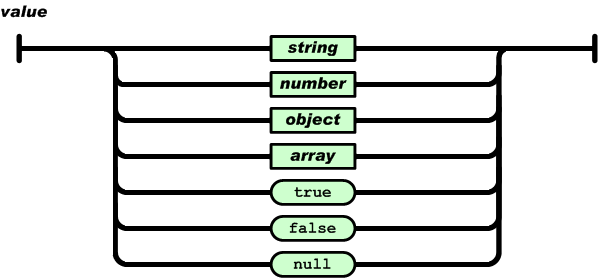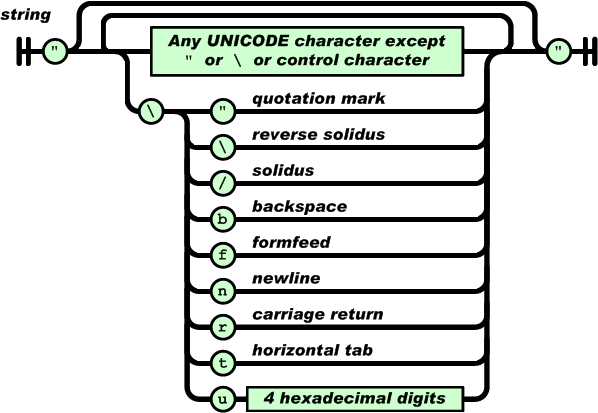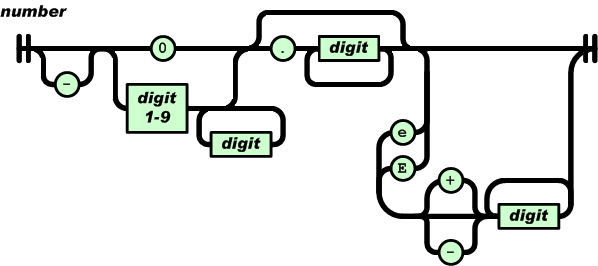JSON Syntax
JSON is built on two structures:
- A collection of name/value pairs. In various languages, this is realized as an object, record, struct, dictionary, hash table, keyed list, or associative array.
- An ordered list of values. In most languages, this is realized as an array, vector, list, or sequence.
An object is an unordered set of name/value pairs.
An object begins with { (left brace) and ends with }
(right brace). Each name is followed by : (colon) and
the name/value pairs are separated by , (comma).

An array is an ordered collection of values. An array
begins with [ (left bracket) and ends with ] (right bracket).
Values are separated by , (comma).

A value can be a string in double quotes, or a number,
or true or false or null, or an object or an array. These
structures can be nested.

A string is a collection of zero or more Unicode
characters, wrapped in double quotes, using backslash
escapes. A character is represented as a single character
string. A string is very much like a C or Java string.

A number is very much like a C or Java number, except
that the octal and hexadecimal formats are not used.

Whitespace can be inserted between any pair of tokens. Excepting a few encoding details, that completely describes the language.
